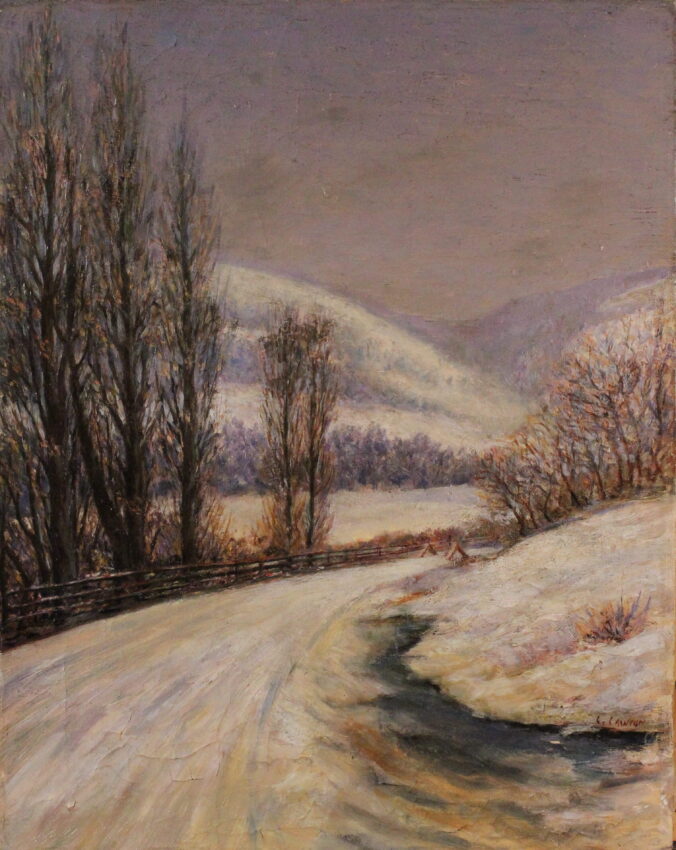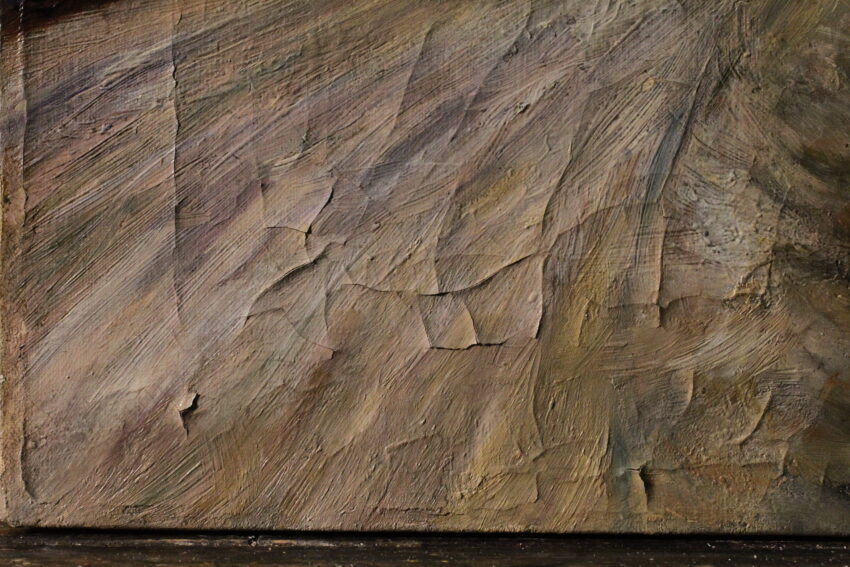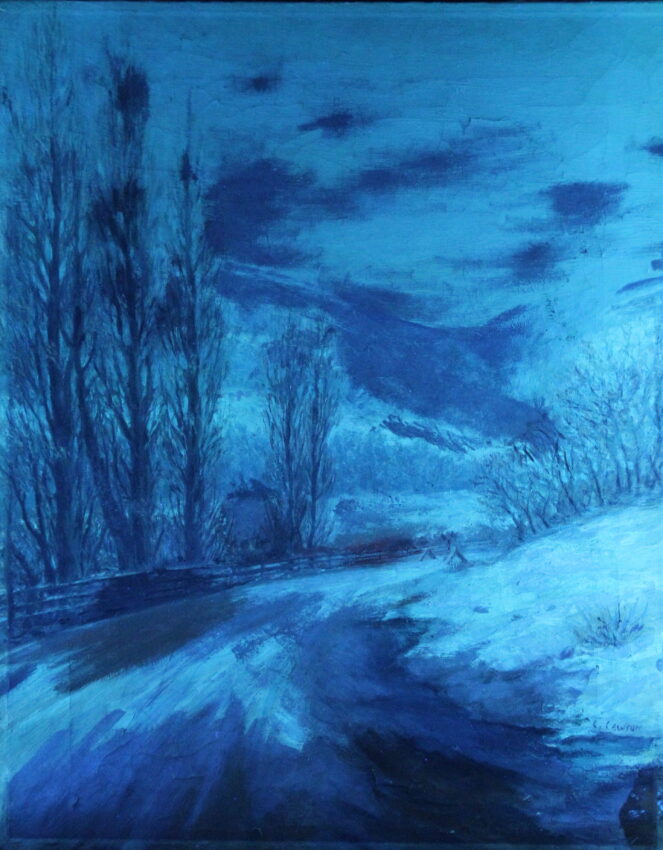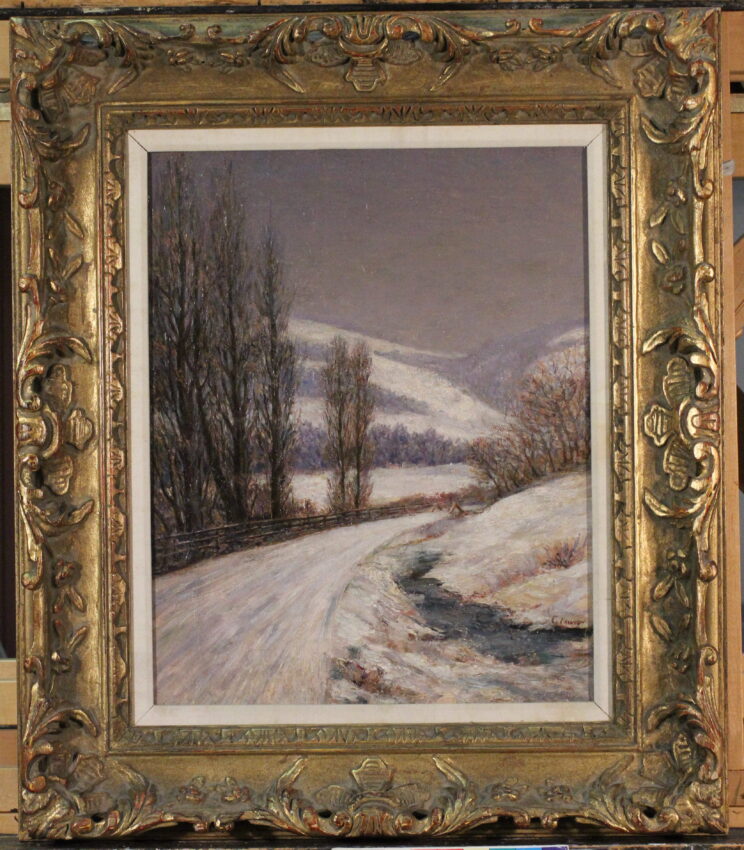It is wintertime in Northern Ohio, and there is certainly snow place like home. Locals learn to enjoy thirty degree plus temperature fluctuations as well as every form water takes-on around freezing temperatures.

Not everyone is a fan of the chilly weather, and for those who might prefer only the idea of snow can instead enjoy the charming winter landscape painting by the artist Ernest Lawson. Stefan Dedecek, Conservator of Paintings, Murals, Polychrome Surfaces, performed a paintings conservation treatment of the winter landscape by Lawson.
The winter landscape (or “winterscape”) features a curving rural road flanked by wood fencing through rolling snow hills. Rows of trees and brush seem to be the only living things to separate the road from the fields and natural setting. While the painting is white with snow, the scene is rich in color with purples, pinks, blues, browns, reds, and many other colors. There is no date, but it was likely painted in the late 19th to early 20th century.

The painting is in overall good condition, but it has some common condition issues which required a paintings conservation treatment of the winter landscape. The painting was restored in the past. It had a tough, glossy varnish overall. Some of the paint film, especially near the bottom was cracked and tented, and there were some losses of the paint.
From the previous restoration, there are also areas of overpaint as seen in the road and the creek and sky. Under Ultra-violet (UV) long-wave illumination, a common examination technique used by conservators, the past restorer’s overpaint is very visible as dark splotches. Beeswax had also been applied to the reverse of the painting at some point, likely in a well-meaning attempt to consolidate the painting, but it had caused greater damage.

The paintings conservation treatment of the winter landscape required great care. Conservator Dedecek first performed a local adhesive consolidation of the paint film followed by a facing procedure with Japanese tissue paper and resin.
The painting was then removed from its stretcher. The past restorer’s old beeswax was reduced as much as possible and the painting was consolidated overall to fully secure the paint film to the canvas. In addition, tenting paint was treated with adhesive and set down.
To impart greater structural integrity, an edge strip lining (as opposed to a full relining which is a more invasive but sometimes necessary technique) was performed on the edges of the painting. The painting was then returned to its original stretcher.
Discolored varnish and overpaint were reduced using various mixtures of polar and nonpolar solvents. An isolation varnish coating was applied before inpainting. Areas of loss were then filled and retouched with reversible synthetic resin before a final protective coating of varnish was applied. After the paintings conservation of the winter landscape was complete, the painting was returned to its ornate gilded frame.

After treatment, the painting is more stable and the colors can be more readily appreciated with the aged and discolored varnished reduced. The removal of overpaint also allows a viewer to see more of the artist’s original work.
Ernest Lawson was a Canadian-American artist. He was born in Halifax, Nova Scotia in 1873. Lawson was greatly influenced by Impressionism. He worked as a draftsman in Mexico City then studied art briefly in the States and Paris, France, before returning to New York City. He later moved to Colorado, and finally Florida where he passed at the age of 66.
He was part of The Eight. A group of American painters: Robert Henri, Everett Shinn, John Sloan, Arthur B. Davies, Maurice Prendergast, George Luks, and William J. Glackens. who only showed their work together one time in 1908, but greatly inspired American Realism movement in the early 20th century.
